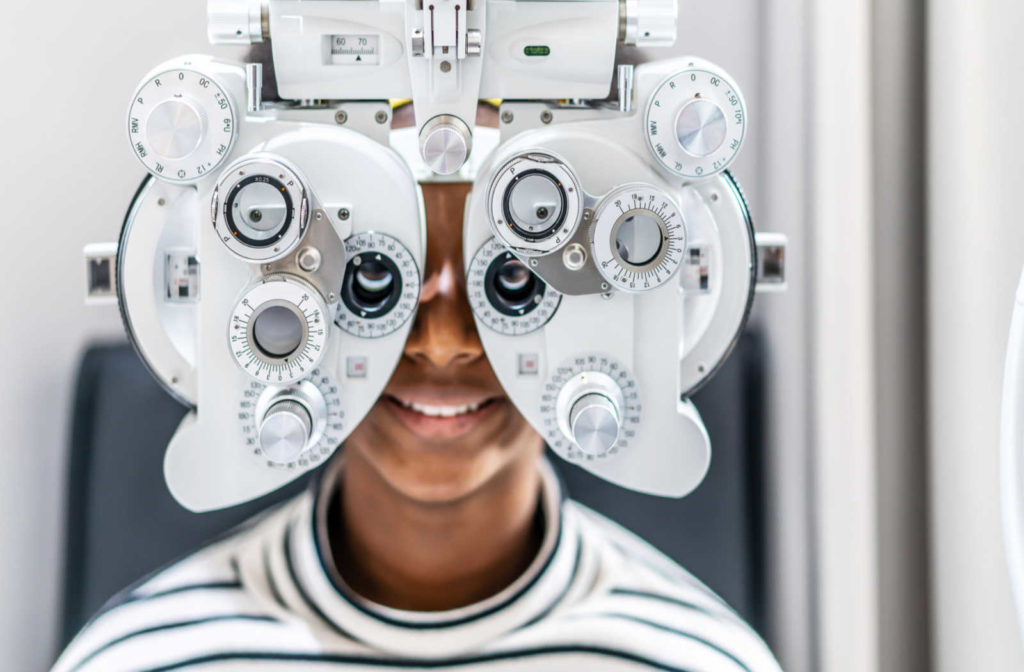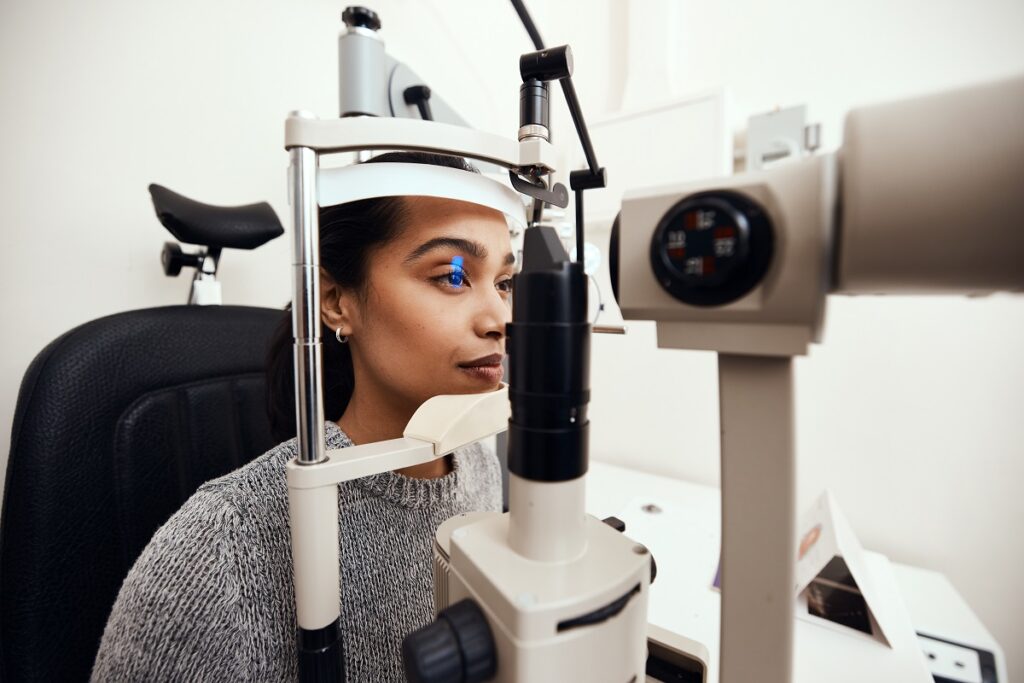Recognizing the Duty of Your Eye Doctor in Preserving Vision
Recognizing the Duty of Your Eye Doctor in Preserving Vision
Blog Article
Understanding the Comprehensive Duty of an Optometrist in Modern Eye Care
In the progressing landscape of medical care, the range of an eye doctor's role has substantially expanded, expanding well beyond the confines of conventional vision modification. With developments in modern technology and a raising emphasis on preventive treatment, optometrists are indispensable in detecting and taking care of persistent eye problems, while likewise involving in early illness detection. Their expertise in advanced diagnostic techniques such as optical comprehensibility tomography is very useful. How do these duties converge with their role in promoting general eye wellness, and what does this mean for person outcomes in a collaborative healthcare environment?
Expanded Extent of Technique
In current years, the role of eye doctors has progressed considerably, with lots of experts currently accepting a broadened range of practice that extends beyond conventional eye assessments. Their duties now include a vast array of solutions, including recommending medicines for ocular conditions, managing persistent eye conditions, and carrying out small medical procedures.
Even more, eye doctors are now much more associated with joint care, functioning closely with eye doctors, medical care medical professionals, and other healthcare professionals to guarantee alternative client care. This interprofessional collaboration is vital in managing intricate situations that require a multidisciplinary strategy. In addition, optometrists are playing a pivotal function in public health campaigns, such as vision screenings and eye wellness education and learning, intended at improving neighborhood health outcomes.
The increased scope of method for eye doctors not only boosts their capability to give extensive treatment however additionally attends to the expanding demand for efficient and accessible eye care solutions, contributing to general medical care enhancements.
Very Early Condition Detection
Early detection of eye illness is increasingly ending up being a prime focus in the broadened function of eye doctors. As primary eye treatment providers, optometrists are distinctively placed to identify early indications of ocular conditions such as glaucoma, macular deterioration, diabetic person retinopathy, and cataracts. This pivotal role is important, as very early diagnosis can significantly boost the monitoring and prognosis of these conditions, potentially avoiding vision loss and improving individual end results.
Eye doctors employ comprehensive eye evaluations to identify subtle modifications in vision and eye health and wellness. These assessments commonly consist of analyses of visual acuity, intraocular pressure, and retinal health. The ability to recognize early indicators of systemic wellness concerns, such as high blood pressure and diabetes mellitus, via eye indications additionally emphasizes the importance of regular eye exams. Early treatment is not only useful in protecting vision yet additionally in minimizing health care expenses connected with innovative condition therapies.
Furthermore, eye doctors play a crucial role in person education, stressing the significance of routine eye examinations as component of overall wellness maintenance. By promoting a proactive strategy to eye care, eye doctors contribute dramatically to public health and wellness, ensuring illness are captured and managed properly before they can advance.
Advanced Diagnostic Techniques
Advanced analysis techniques have transformed the method of optometry, making it possible for experts to spot and check ocular illness with unmatched precision. Technologies such as optical comprehensibility tomography (OCT) provide high-resolution, cross-sectional images of the retina, facilitating early detection of conditions like glaucoma and macular degeneration.
One more vital improvement is digital retinal imaging, which catches detailed sights of the retina utilizing high-definition video cameras. This innovation is important in recognizing adjustments in retinal framework gradually, consequently helping in the administration of conditions like diabetic person retinopathy. Aesthetic field testing, enhanced by computer-aided systems, permits precise mapping of an individual's area of vision, crucial in detecting and tracking glaucoma progression.
Corneal topography, another remarkable analysis tool, generates topographic maps of the cornea's surface area. This is especially advantageous in suitable call lenses and planning refractive surgery. These innovative analysis strategies collectively enable optometrists to supply proactive, targeted care, guaranteeing much better patient end results and strengthening their pivotal duty in eye health administration.
Handling Chronic Eye Problems
Managing persistent eye conditions is a keystone of optometric care that needs an extensive understanding of numerous ocular conditions and their long-term effects. Optometrists play a critical duty in handling, surveillance, and diagnosing conditions such as glaucoma, diabetic person retinopathy, and age-related macular degeneration. These problems, if left neglected, can cause significant visual disability or loss of sight, highlighting the vital importance of recurring treatment and management.
Optometrists use a range of diagnostic tools, including optical comprehensibility tomography (OCT), aesthetic field testing, and fundus photography, to examine the progression of these persistent problems. By closely keeping an eye on adjustments in eye health, optometrists can readjust therapy plans to reduce illness progression. This might entail prescribing medicines, advising way of living alterations, or collaborating with eye doctors for surgical interventions when essential.

Function in Preventive Care
Preventative treatment is an essential aspect of optometry that concentrates on preserving eye health and wellness and avoiding the onset of eye illness. Optometrists play a critical duty in very early detection and avoidance, utilizing normal eye assessments to identify threat aspects and subtle adjustments in ocular wellness. Eye Doctor Optometrist. These assessments are not merely concerning vision improvement but incorporate a thorough assessment of eye functions and structures, enabling the recognition of conditions such as glaucoma, cataracts, and macular deterioration at an onset
Along with diagnostics, optometrists enlighten clients on lifestyle options that advertise eye health and wellness, such as correct nutrition, UV security, and the relevance of regular eye examinations. They advise on the right use digital gadgets to stop digital eye stress, an expanding issue in the electronic age. Eye doctors also supply advice on protective eyeglasses for leisure and job-related activities, reducing the danger of injury.
Preventative eye care reaches systemic health and wellness concerns that show up in the eyes, such as diabetes and hypertension. By working together with other medical care professionals, optometrists add to holistic client care, highlighting the interconnectedness of systemic and ocular health and wellness. This positive technique is sites essential in protecting visual acuity and overall well-being.
Final Thought
Optometrists now occupy a critical role in modern eye care, characterized by an expanded scope that includes diagnosing and managing persistent eye problems, suggesting medicines, and carrying out small procedures (Optometrist Chino). Their proficiency in early disease detection is enhanced by innovative analysis methods such as optical coherence tomography and digital retinal imaging. By emphasizing preventive treatment and person education and learning, optometrists contribute significantly to total eye health, collaborating with various other medical care experts to guarantee reliable and comprehensive client outcomes

In enhancement to diagnostics, eye doctors inform people on lifestyle options that advertise eye health and wellness, such as correct nutrition, UV security, and the try here importance of routine eye exams.Preventive eye care expands to systemic health problems that show up in the eyes, such as diabetic issues and high blood pressure.Optometrists currently occupy an essential duty in modern eye care, defined by an increased scope that includes identifying and taking care of chronic eye conditions, prescribing drugs, and performing minor surgical treatments.
Report this page